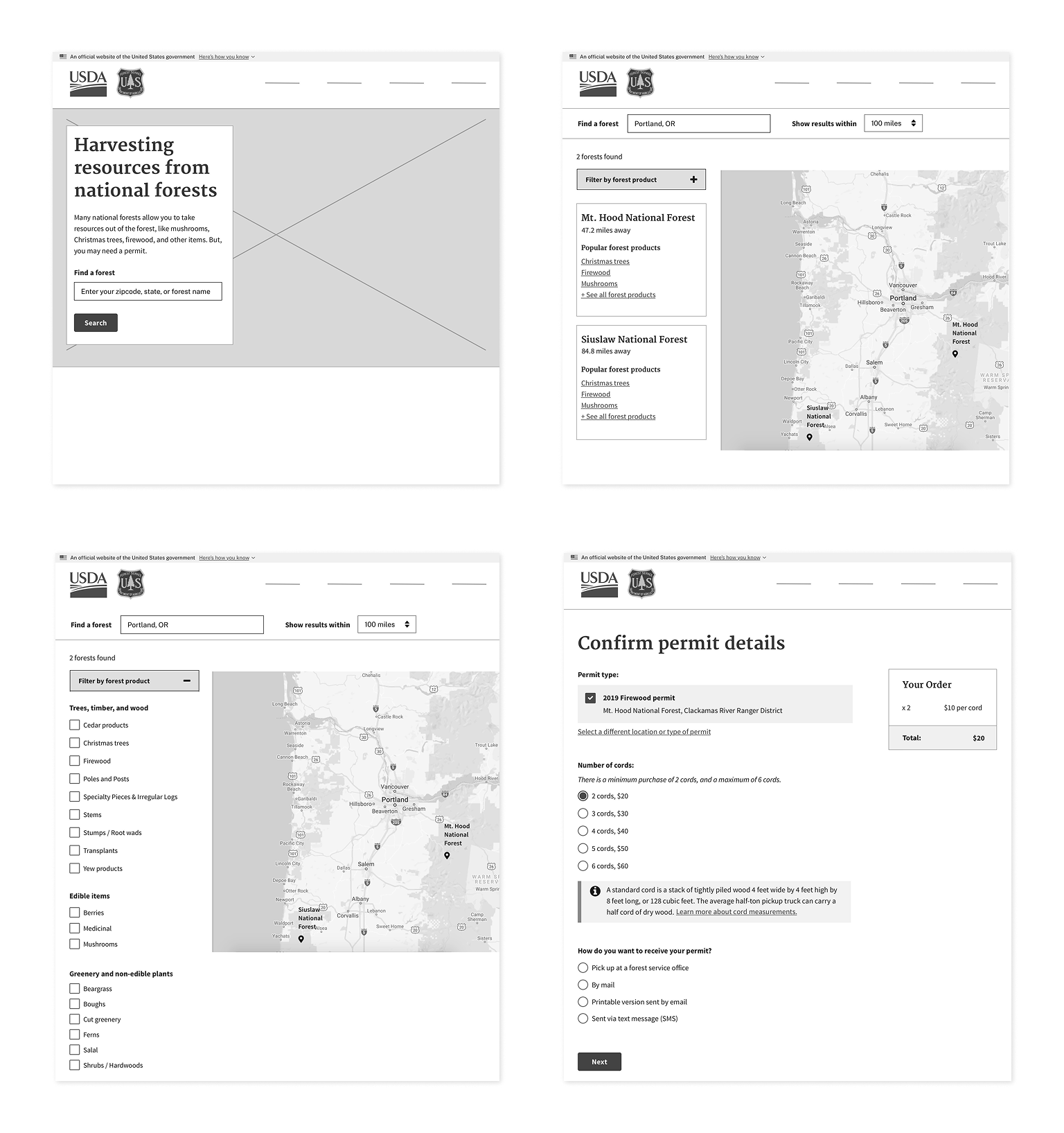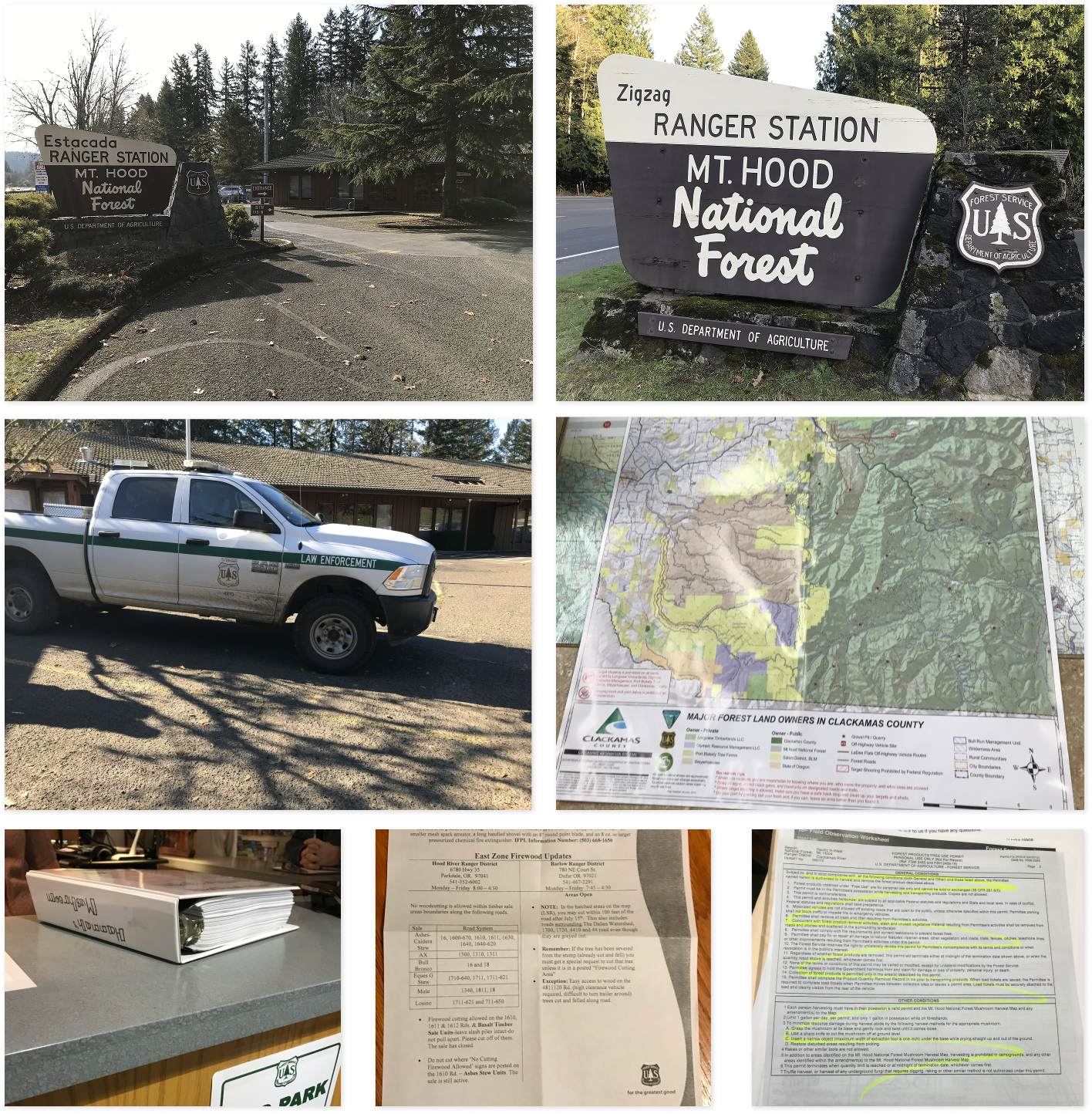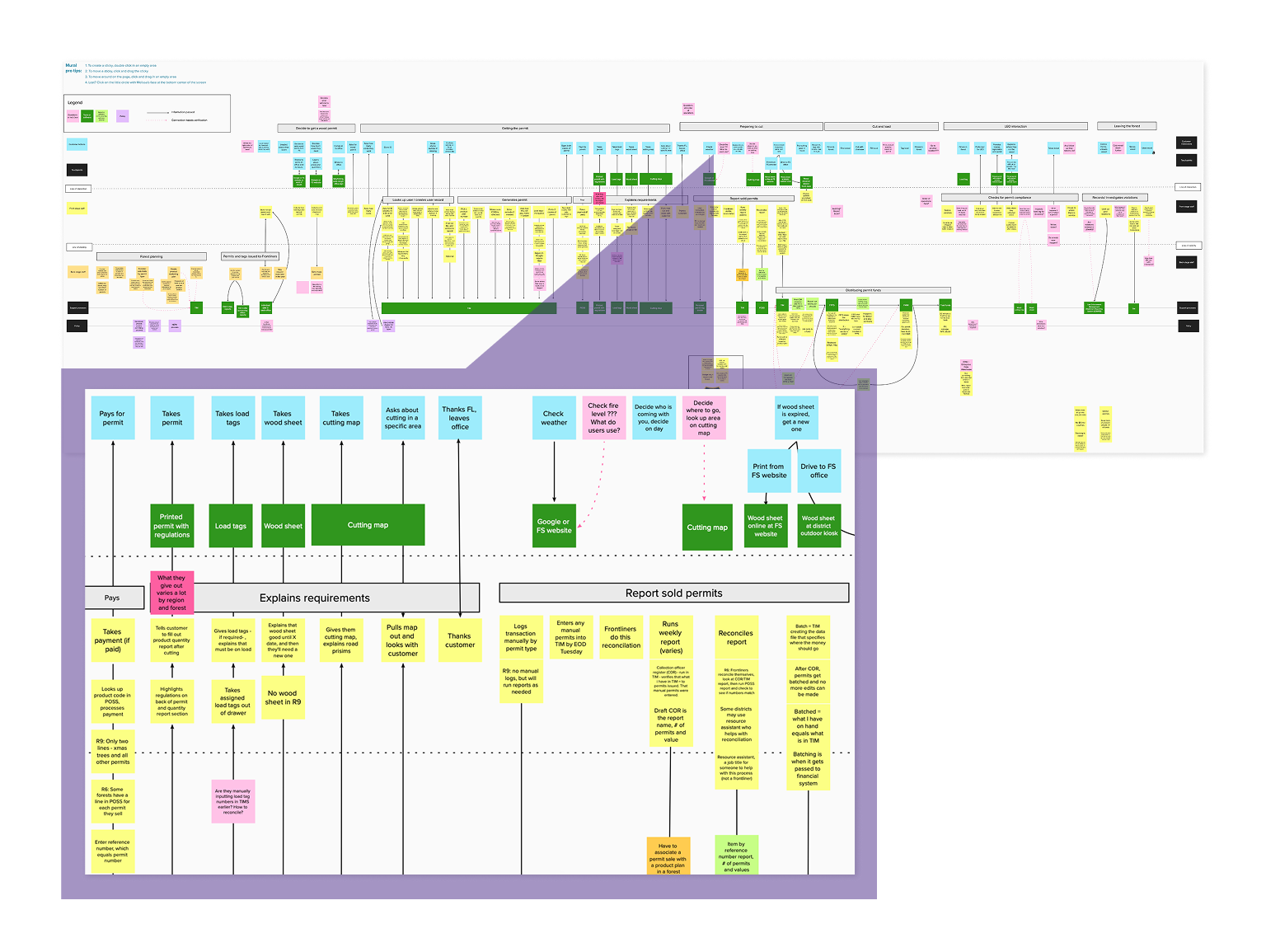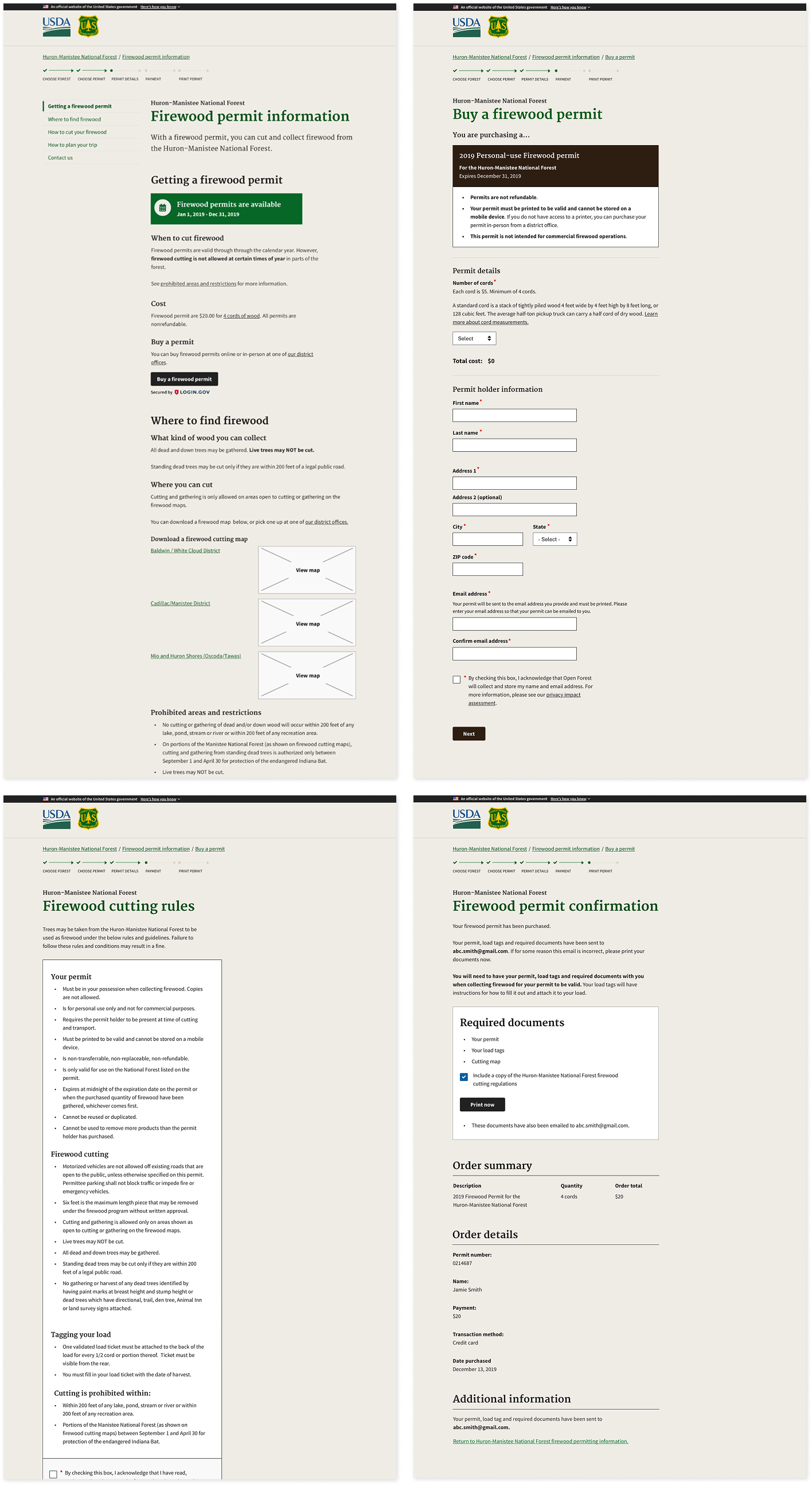Digitizing firewood permits
The U.S. Forest Service (USFS) sells permits to harvest certain forest products like firewood and mushrooms from national lands. But, these permits needed to be purchased in-person at remote ranger stations with limited hours, and used permitting systems that were difficult to maintain and scale.
I led prototyping and interaction design to quickly identify what permit seekers, frontline staff, law enforcement, and stakeholders would need to sell firewood permits online, validate the UX workflow, and flag opportunities for broader permitting modernization.
Outcomes:
- Digital firewood permits are now available at 14 national forests through an online permitting application.
- Improved the usability, reusability and accessibility of USFS applications by incorporating U.S. Web Design System tokens, patterns, and guidance.
USFS needed scalable, modern tools to deliver better permitting experiences
Forest product sales are a core revenue stream for the U.S. Forest Service (USFS). Every year, the agency sells 5.5 million cubic feet of timber to commercial partners and the public. These permits also give the public low-cost access to firewood, mushrooms, and other natural resources from national lands.
But, the core IT system behind forest product permits— the Timber Information Manager (TIM) — was outdated and difficult to scale. For permit seekers, this meant they had to travel to remote ranger stations to purchase a permit in-person, and often faced limited business hours and system downtime. Frontline staff and system administrators faced frustrating errors when issuing permits and workarounds to get the data they needed for forest planning and restoration efforts.
18F partnered with USFS to support a long-term modernization effort for TIM, starting with firewood permits to deliver immediate value while setting the foundation for broader modernization of the forest product marketplace.
Focusing design hypotheses
Working with the team, I designed a lightweight, four screen flow to facilitate conversation on three key milestones for online firewood permits:
- Locating a forest and a product: Permit information was often housed deep within individual forest pages. We wanted to explore a service-centered experience where permit seekers could access multiple types of permits (firewood, Christmas trees) from multiple forests with a consistent flow.
- Completing a sale: We wanted to know what was the minimum amount of information needed to process a sale and issue a permit.
- Method for accessing permits and tags: We wanted to encourage discussion on how to distribute permits to buyers and issue tags so that they could prove a purchase while harvesting.
I led sketching exercises with the team to narrow in on a V0 approach to bring to the field. Our sessions considered existing firewood permitting regulations, audits of online content, and conversations with stakeholders. This also included auditing the Christmas Tree permit pilot and Open Forest Design System to identify patterns for potential reuse.


Mapping end-to-end interactions and data exchange
To synthesize what we'd learned in the field and in stakeholder interviews, I created a service blueprint, then filled the gaps collaboratively with program and IT managers. These live editing sessions with staff helped validate in real time that we were capturing system interactions accurately.

The final blueprint documented gave us a full accounting of
- Visible actions for getting a firewood permit (permit seeker to frontline staff, frontline staff to office systems, law enforcement to permit holders)
- Unseen system interactions (how permit sales funds are distributed and reported)
- Dependencies and constraints influencing the full process (purchasing policies, resourcing, forest planning)
The team used this map to clarify constraints and highlight places where we could integrate new tooling to issue permits online.
Expanding the prototype
Using insights from field visits and mapping sessions, my next prototype iteration included:
- Testing interactions and end-to-end flow: Developed a clickable prototype to go through the whole process of purchasing a permit, and led usability tests to verify we had core functionality and content design right.
- Leveraged patterns from the Open Forest Design System: Extended the Open Forest design system to a new permitting type and ensured consistency, scalability, and alignment with federal standards and Forest Service branding.
- Developed a printable load tag concept: Designed a printable permit tag with visual cues for law enforcement and evaluated it with stakeholders for fit with existing enforcement workflows.
- Shipped with documentation for scale: Captured key learnings, design debt, and research artifacts to empower future teams to build confidently on our work.


14 forests now offer digital firewood permits
This research, prototype, and accompanying roadmap were used to secure additional investment and plan additional expansions into online permitting. The design documentation and prototype sustained velocity for future teams and gave USFS a clear product definition to acquire against.
From this work, the USFS now sells digital forest products permits at 14 national forests.